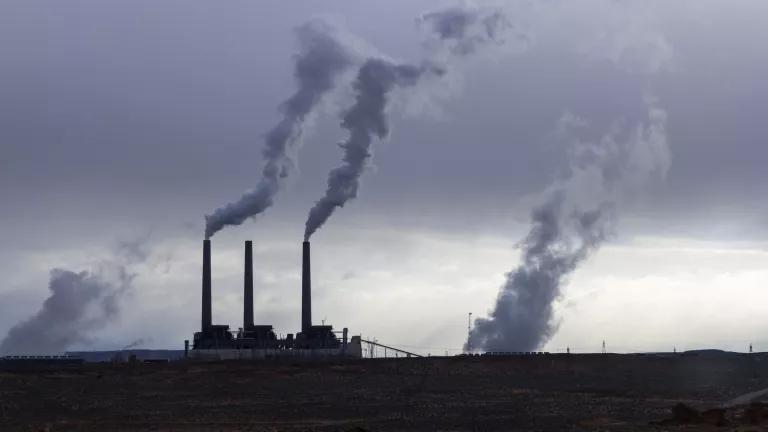Last week, NRDC filed a Title VI administrative complaint with the U.S. Environmental Protection Agency (“EPA”) Office of Civil Rights on behalf of the North Shore Waterfront Conservancy of Staten Island (“NSWC”), a not-for-profit organization dedicated to advancing public policies that are inclusive of the needs of the North Shore’s environmental justice communities. The administrative complaint was filed against the Port Authority of New York and New Jersey (“Port Authority”) and alleges that the ongoing construction on the North Shore of Staten Island to raise the roadway of the Bayonne Bridge is creating an adverse, discriminatory, and unjustified impact on nearby residents of color.
Title VI of the Civil Rights Act of 1964 prohibits discrimination on the basis of race across all activities or decisions made by recipients of federal funding. However, several U.S. Supreme Court decisions have created barriers to communities enforcing it in court, meaning that remedies for racially disparate impacts are only available through administrative complaints filed with federal agencies under their Title VI implementing regulations. Fundamentally, the strength of Title VI comes from the requirement that these federal agencies affirmatively act on complaints to ensure that the activities of their funding recipients do not result in discriminatory outcomes. The Port Authority must comply with EPA’s Title VI implementing regulations because it receives federal financial assistance from that agency.
In this case, civil rights are being violated because project construction on the North Shore is creating unjustified adversity that disproportionately burdens residents of color.
Adversity
Construction activities are likely exposing residents to hazardous contaminants such as lead, polychlorinated biphenyls (“PCBs”), and asbestos through a variety of pathways, predominantly inhalation and ingestion. Site visits to the North Shore construction zone revealed that excavation in areas of known PCB contamination has been occurring without precautions in place to contain soil runoff, while in areas of lead contamination, there is evidence that excavated materials are being carried onto public sidewalks by construction vehicles.
Across the board, these toxic pollutants that originate outdoors can penetrate the indoor environment through cracks and other entry points, with contaminants from public sidewalks often being carried into homes on residents’ shoes and clothing. Since construction began in the fall, NSWC members and residents adjacent to the construction zone have reported that their vehicles are covered with dust blowing over from the Port Authority properties and that they are experiencing difficulty breathing with more frequent asthma attacks.
While similar contaminants are being disturbed by construction on the New Jersey side of the Bayonne Bridge, project construction is exacerbating existing cumulative adversity borne by the communities of color on the North Shore. For example, the North Shore is a National Ambient Air Quality Standard nonattainment area for particulate matter 2.5 and EPA selected the North Shore as one of ten “Environmental Justice Showcase Communities” across the United States because of the number of children with elevated levels of lead in their blood.
Discriminatory
The construction is discriminatory because the probability of being affected by the contaminants exposed by construction is higher for people of color and people of color comprise a substantially greater proportion of the affected population than the general population of Staten Island. The residential areas adjacent to the construction zone on the North Shore are both more densely populated and have a significantly higher percentage of people of color than either the similarly situated communities in Bayonne or the entirety of Staten Island.
Unjustified
Finally, the Port Authority’s legitimate economic justification for the project doesn’t eliminate its duty to engage in mitigation to achieve a less discriminatory outcome. While raising the Bayonne Bridge to provide access to larger foreign vessels may increase the Port’s economic competitiveness, project benefits will not be felt by the people of color on the North Shore further burdened to achieve that end.
This administrative complaint is a complementary tool to a more traditional lawsuit filed in July 2013 against the U.S. Coast Guard by NRDC, NSWC, the Coalition for Healthy Ports, the Elm Park Civic Association, and the Eastern Environmental Law Center to compel a comprehensive assessment of the environmental impacts of raising the Bayonne Bridge roadway under the National Environmental Policy Act (“NEPA”). In comparison, the Title VI administrative complaint focuses on mitigating the cumulative adversity exacerbated by project construction that is disparately impacting North Shore residents of color. It also provides an outlet to involve EPA, which otherwise has no legal grounds to participate.
NSWC is asking the Port Authority to engage in more comprehensive monitoring, sampling, and exposure mitigation throughout project construction. It is imperative that EPA meaningfully include the affected North Shore residents in each stage of resolution of the complaint, including soliciting community input on remedies and facilitating community inclusion in negotiations with the Port Authority. The Port Authority has legitimate and important economic reasons for raising the Bayonne Bridge roadway. However, project construction must not continue in a way that exacerbates the risk of exposure to toxic contaminants for residents of color who already bear the brunt of Staten Island’s polluting industries and who won’t see any of the long-term economic benefits associated with the project.




